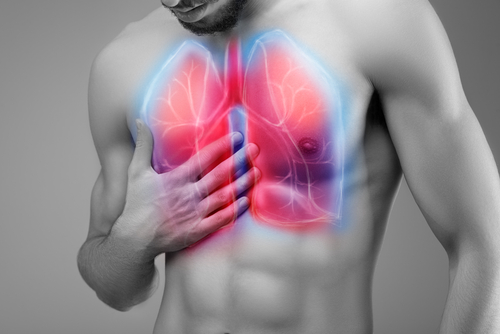Acute Flares Seen as More Deadly With IPF Alone, Than With IPF and Emphysema

Survival chances for people with an acute exacerbation linked to idiopathic pulmonary fibrosis (IPF) are significantly worse than among those experiencing such flares with both IPF and emphysema, an examination of patients’ medical records found.
The single-site study, “Prognosis of patients with acute exacerbation of combined pulmonary fibrosis and emphysema: a retrospective single-centre study,” was published in the journal BMC Pulmonary Medicine.
IPF is marked by the scarring of lung tissues, causing them to stiffen and making it difficult to breathe. Acute exacerbations — a sudden worsening of disease symptoms — in these patients can lead to a significant decline in lung function.
Some IPF patients also have a condition known as emphysema, which is a form of chronic obstructive pulmonary disease (COPD) caused by damage to the tiny air sacs in the lungs called alveoli.
Emphysema is primarily due to smoking, but airborne pollution, fumes, and dust can also contribute to its development. Acute exacerbations are also known in emphysema.
People with both conditions, known as combined pulmonary fibrosis and emphysema (CPFE), typically have fibrosis in the lower lung and emphysema in the upper lung, as measure by CT scan.
However, studies assessing the likely disease course (prognosis) in CPFE patients after an acute exacerbation are limited.
Researchers at the Shinshu University School of Medicine in Japan reviewed the medical records of 21 CPFE patients who experienced acute exacerbations (AE-CPFE group) and compared their prognosis to 41 IPF patients with exacerbations (AE-IPF group).
Cigarette smoking was significantly higher in the CPFE group at the study’s start than among IPF patients. Otherwise, there were no notable differences between the two groups in terms of sex, age, or number of people using corticosteroids, antifibrotic therapies, or supplemental oxygen.
The percentage of predicted forced vital capacity (%FVC) — a measure of lung health — was significantly higher in the CPFE group than in the IPF group. KL-6 blood levels, a biomarker for lung inflammation and damage, were significantly higher in the IPF patients compared with CPFE patients. People with IPF, however, were more likely to be treated with immunosuppressants.
The degree of respiratory care, the duration of ventilation, and the length of stay in an intensive care unit were similar between these two groups. “The disease severity before AE did not differ between the two groups,” the researchers wrote.
At the time of an acute exacerbation, no differences in CT scan patterns were seen. But IPF patients had significantly higher blood levels of KL-6, as well as higher white blood (immune) cell counts compared with CPFE patients.
The survival rate for CPFE patients with acute exacerbations was significantly greater that was found in those with IPF and an exacerbation.
The 30-day survival rate for the AE-CPFE group was 95.2%, and 61% across the IPF group. Likewise, survival at 90 days after an exacerbation for AE-CPFE patients was 85.7%, and 43.9% among those with AE-IPF. Within those 90 days, 13 people in the IPF group died and two in the CPFE group.
All deaths were due to respiratory failure following a flare, the study noted.
“In conclusion, we found that the survival prognosis of AE-CPFE was significantly better than that of AE-IPF for the first time,” the researchers wrote.
A possible reason for this finding could be that “the pathogenesis of emphysema may antagonise the pathogenesis of ongoing diffuse alveolar damage” that marks lung injury, the researchers suggested. Imaging “implied that the lung field with emphysema was larger and that with fibrosis was smaller in the CPFE group, than the lung field with emphysema and the lung field with fibrosis in the IPF group.”
Overall, they concluded, “our findings may improve the medical treatment and respiratory management of patients with AE-CPFE,” the team added.







